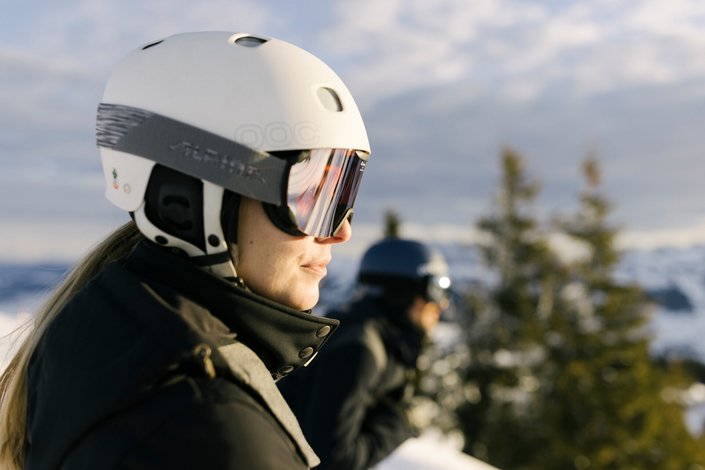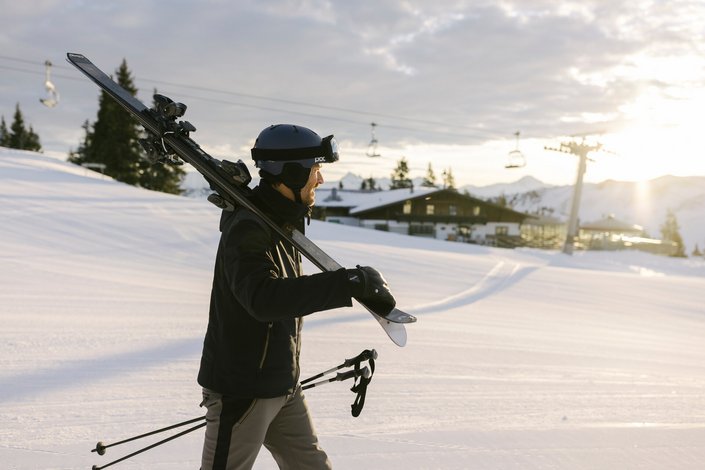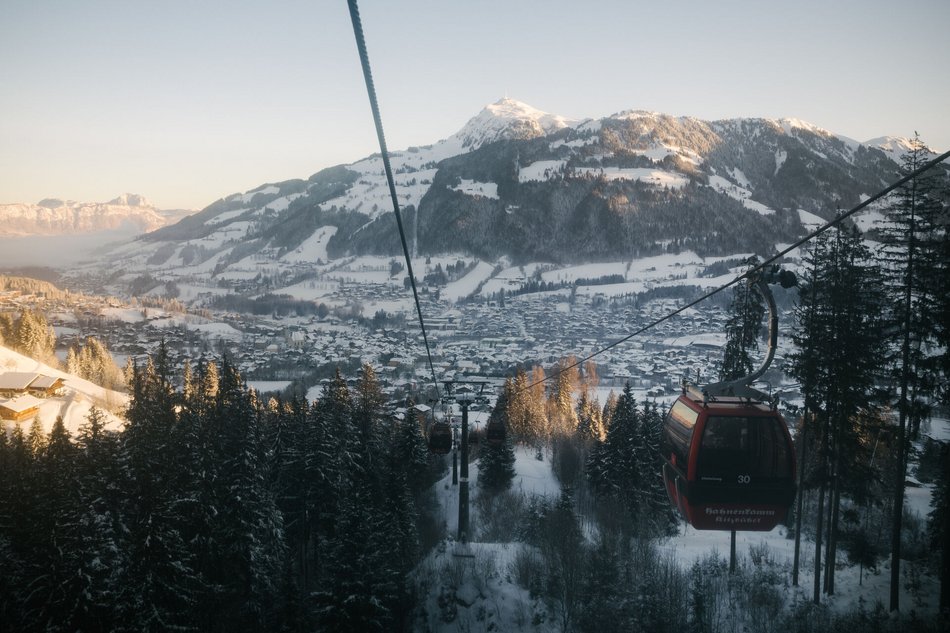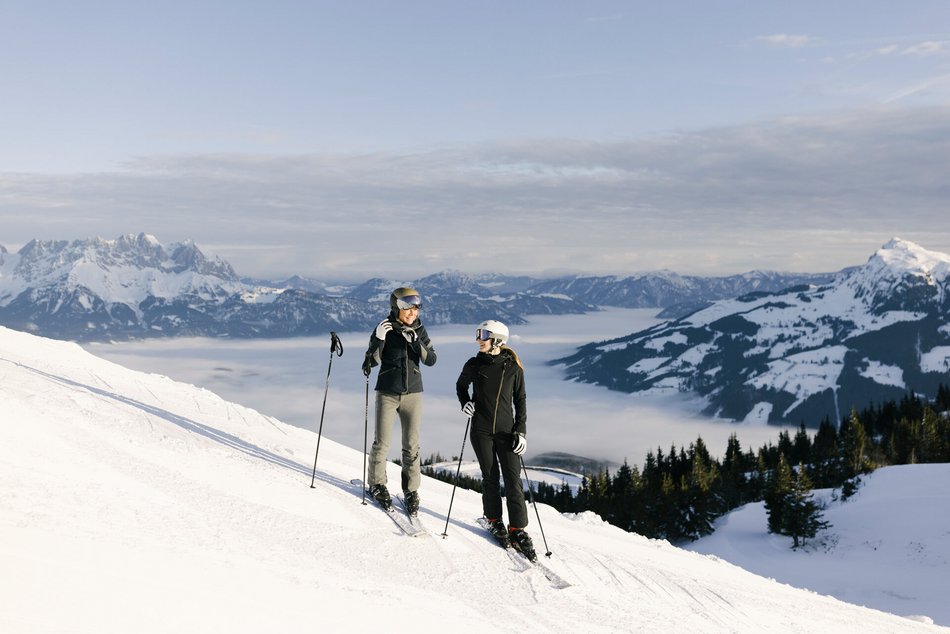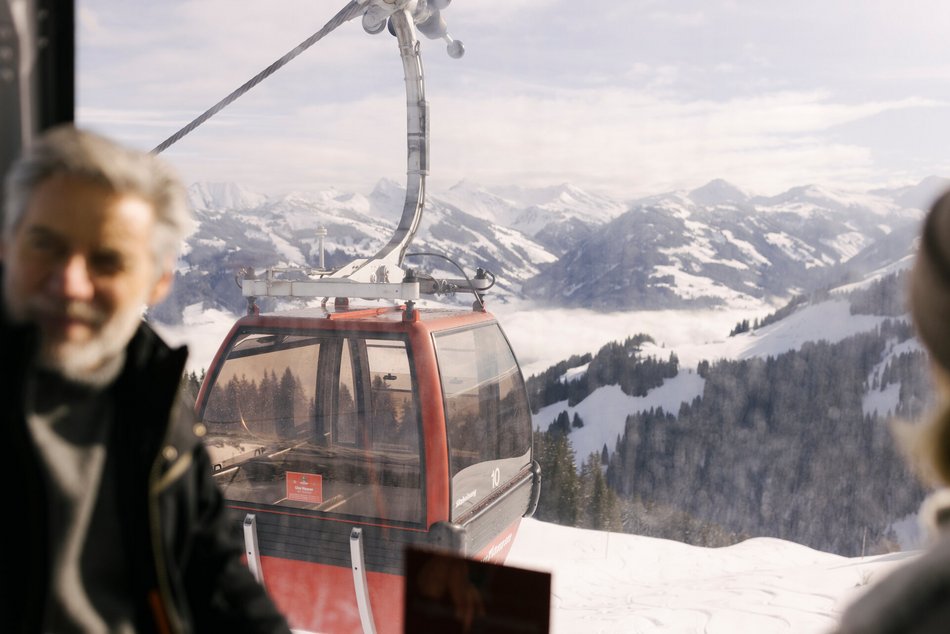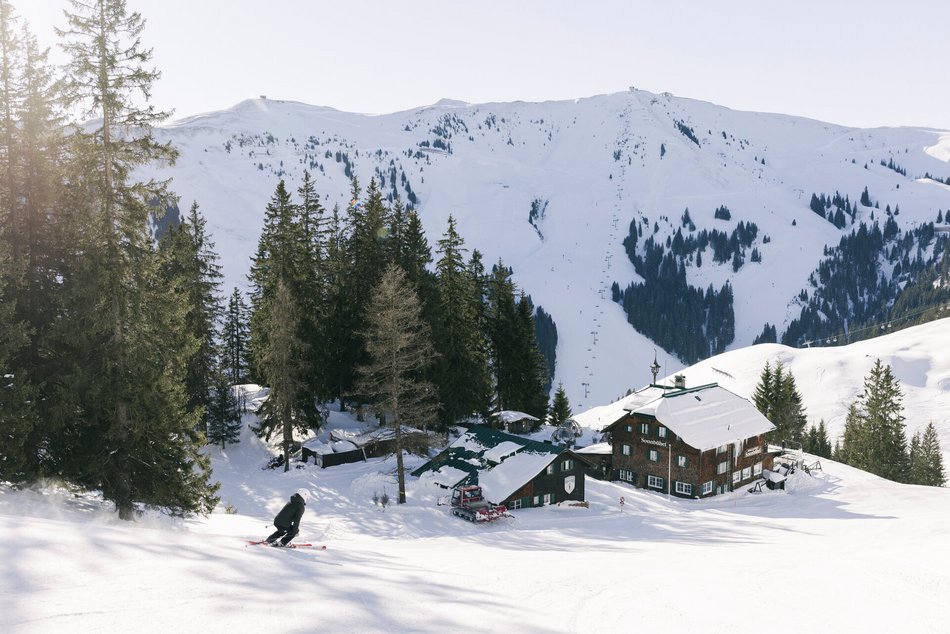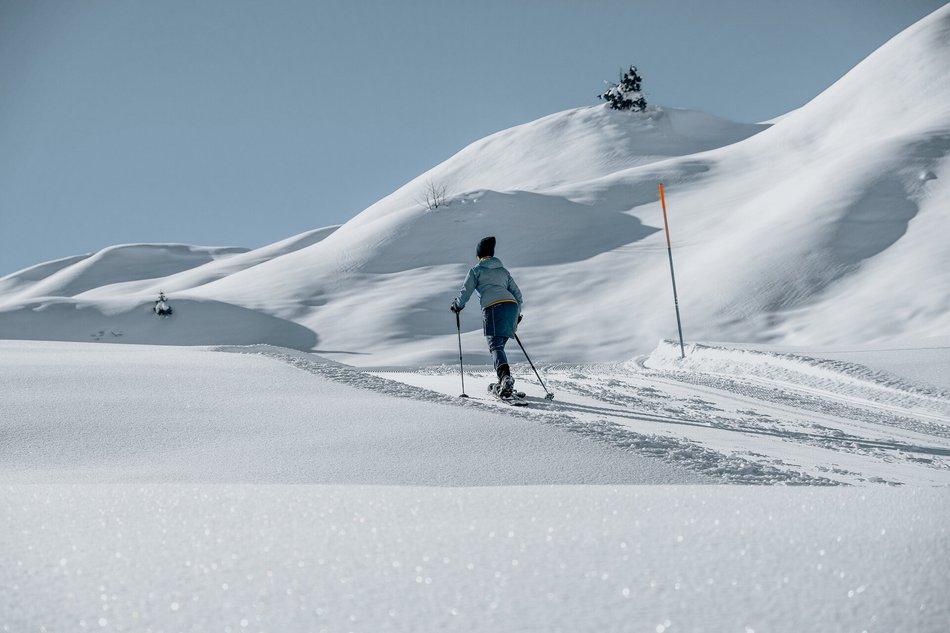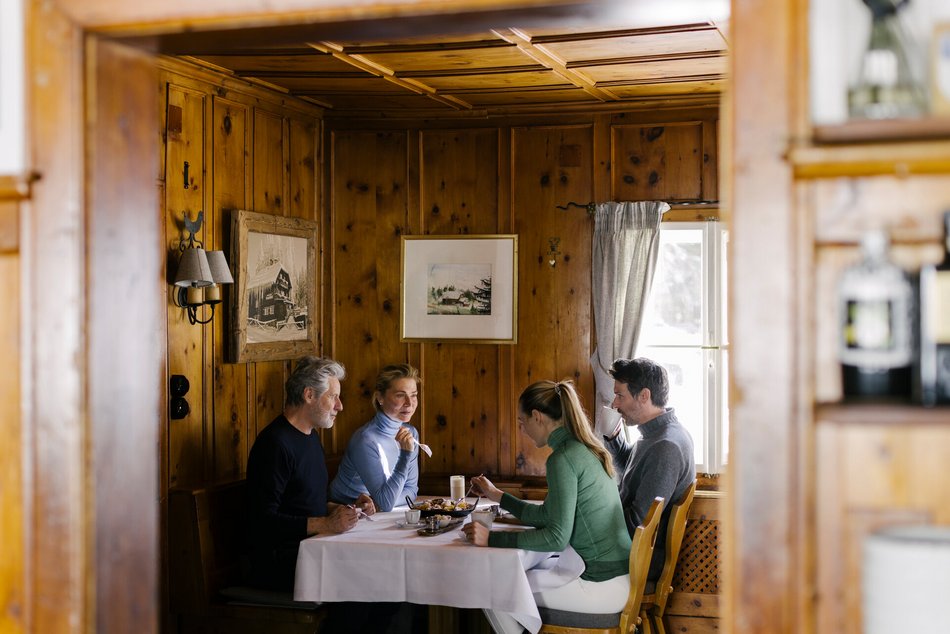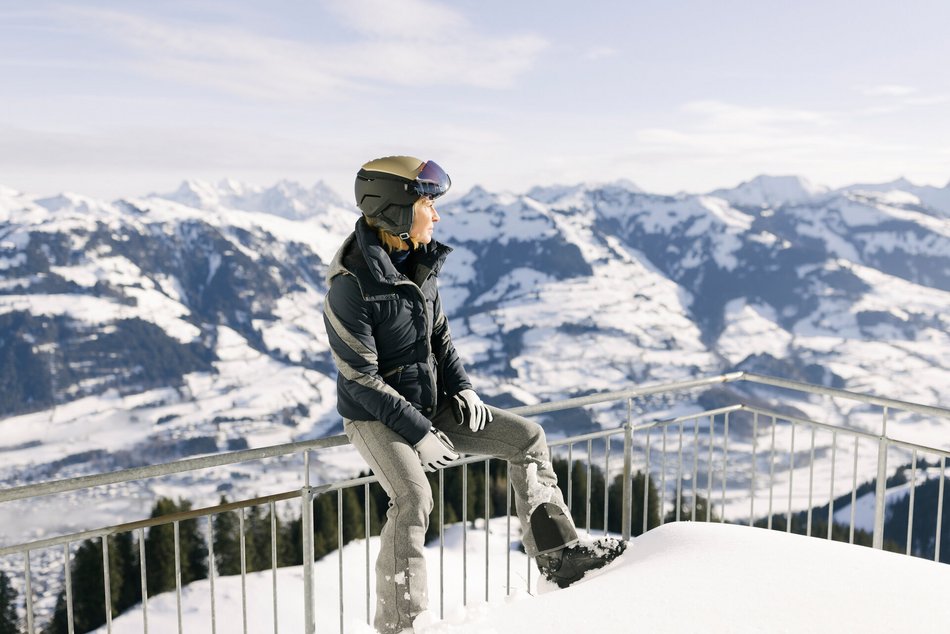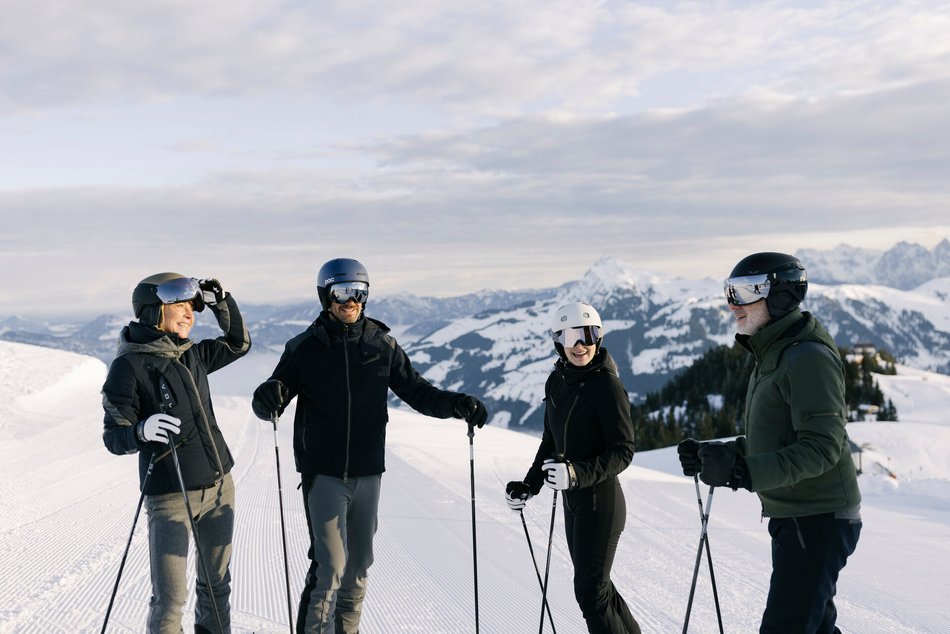Skiing in Kitzbühel for beginners
Discover the joy of skiing with our user-friendly guide. We've compiled all the essential information in one place, providing tips on what you need, where to go, and what to expect for a seamless and enjoyable first-time skiing experience.
Skiing requires special gear for both performance and comfort, most of which is available for rent in Kitzbühel.
Items you can rent
Skis
Poles
Ski boots
Helmet
For a beginner it is recommended to rent skis and poles to start with, and then consider buying your own once you have improved. There is however no need to buy skis at any point, as the rental shops have a large selection of skis to suit every level of skier.
If you have strangely shaped feet, you may want to consider buying ski boots straight away, as you may find it a lot more comfortable that way. Helmets are available to rent, and shouldn’t have any problems with fit, but you may also want to consider buying your own.
Kitzbühel has lots of rental shops with all the gear you will need. Many shops offer ski rental with 3 price levels, such as economy, premium & superior. For your first week of skiing, the lowest price level should be sufficient.
Essential Gear to Purchase
Ski jacket
Ski pants
Ski socks
Underlayers (for warmth)
Gloves
Goggles (or sunglasses)
Suntan lotion (recommended)
This equipment can be all be bought in Kitzbühel, or from elsewhere before your holiday. You can spend as much or as little as you like here, as for a beginner, the ski clothing you will find in lower-cost outlets is generally perfectly good, although as you improve you will probably want to improve your equipment too. Or you can simply start off by buying higher quality clothing, which won’t need replacing as quickly.
Getting from your accommodation to the slopes
From a lot of the accommodation in Kitzbühel you can walk to the ski slopes, but for places that are a bit further away there is a network of ski buses, taxis, and a train station right next to the Hahnenkamm lift station. Getting to the slopes is not something you need to worry about, and the staff at your accommodation will be able to tell you about the easiest ways to get to the slopes.
If you want to drive to the slopes, there are plenty of car parks, but we recommend parking at the lift stations outside of Kitzbühel where there is more capacity, and less traffic to reach them.
Car ParksLearning to ski
We highly recommend that when you start learning to ski, you take ski lessons through a ski school. Our ski instructors are trained to teach people to ski with the correct technique and use exercises that teach you the correct movements in a safe way.
Although it is also possible to learn from friends, or even teach yourself, we don’t recommend it, as people tend to learn a lot quicker, ski better, and enjoy it more, when they take lessons.
Ski SchoolsWhere to ski
Free beginner lifts in the valley
Kitzbühel and its holiday villages, have several free to use lifts in the valley, where you can learn the basics without the need to pay for a lift pass. With a private ski lesson, these lifts should provide most people with the slopes they need for the first one to two days. Please be aware though that at the start and end of the ski season, these lifts might not be open, and a lift pass may be required to get to the beginner slopes.
Free lifts: A2, A3, A4, E2, E3, E4, F2, G2
Beginner slopes on the mountain
These slopes require a lift pass, but provide an even better selection of slopes where you can learn to ski and progress. To get to the slopes you will need to take a gondola up the mountain from the valley.
Lifts for the first steps: A6, A7, G3, H9, H10
Lifts and pistes for beginner skiers that can turn and control their speed: B4/18, H6, H8/15, H2/2a
Lifts and pistes for skiers that are starting to ski parallel: A8/21 blue, B1/25, B5/36&37, C2/16, F1/66 (top half)
We especially recommend here that beginner skiers, ski the parallel pistes for the first time with an instructor, as there are several steeper and narrower areas.
Kitzbüheler Horn - the area for groups with skiers or snowboarders with different levels
The Kitzbüheler Horn is a fantastic little ski area, which is great for families, and groups. It has pistes suitable for everyone from complete beginners all the way to the most advanced skiers, and nothing is ever more than 2 lift rides away. This enables groups to meet up regularly, and eat lunch together, no matter how many different levels of skier or boarder they have. There’s even a snowpark for kids, and a winter hiking route for non-skiers. As a bonus, the Kitzbüheler Horn is also surrounded by some of the best views in the ski area.
Lunchtime
It’s always important to take a break, and the Kitzbühel ski area hat restaurants next to, or close by, for all the beginner slopes.
Mountain restaurantsHow quickly will I learn to ski?
Everyone is different and learns at different rates. Generally speaking, after 5 or 6 days of skiing, with lessons. Most beginners are able to ski carefully, down most of the blue pistes in the area. This enables them to see enough of the area to feel that they have skied around the mountain, and providing the weather has played ball, they will have seen some pretty spectacular mountain views, and managed to visit several different restaurants.
Things to be aware of
Stay Energized - Skiing can be tiring
Learning to ski can be very energy intensive, most beginners will only spend 2 to 4 hours on skis each day, and even most more advanced skiers often only spend 3 to 5 hours skiing each day. It is important to take regular breaks, eat and drink something, and keep your energy levels high. The more tired you get, the more your ski technique will suffer, decreasing your enjoyment, while also increasing the risk of an injury.
Sun Protection Essentials
Even on days where it doesn’t seem to be sunny, the altitude and reflections from the snow, can expose you to far more UV rays than you might expect. We highly recommend putting suntan lotion on any exposed skin, no matter the weather, or time of year.
Layer up
Get ready for temperatures ranging from -15°C to +15°C. Embrace the art of layering—add more on chilly days and use a shell jacket when it's warmer.
The snow conditions can vary
The snow can be anything from soft fluffy powder snow, to heavy slush snow, or a sheet of ice. Beginners tend to prefer the snow to be firm, but soft enough that the skis can dig in and grip, but this is not always the case, and it is quite common for the snow conditions to change during your holiday.
Be Prepared for Weather Changes
Mountain weather is unpredictable, ranging from clear sunshine to fog. Embrace the diverse conditions for a memorable skiing experience.
Should the worst happen
While skiing is far safer than its reputation might suggest, injuries can happen. Should you be unlucky, there is a vast network of rescue and medical services, rarely more than a stone’s throw away. Should anything happen, you will be in the best of hands, just please make sure you have insurance.
Embark on your skiing adventure with these friendly tips for a safe, enjoyable, and unforgettable experience.
![[Translate to EN:]](https://www.kitzbuehel.com/fileadmin/_processed_/7/4/csm_skifahren-ski-alpin-kitzbuehel-skigebiet-hahnenkamm-winter-c-kitzbuehel-tourismus-12-2022-12-15-101608-w1920-q80_71b53fe1c6.jpg)
